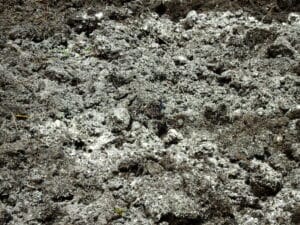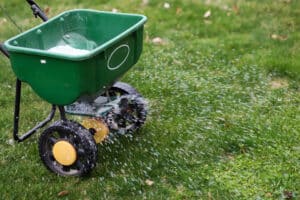Brown spots on your lawn arise from many potential causes, from poor soil quality to dog urine to over-fertilization. No one wants unsightly brown spots taking over their stretch of formerly green lawn. But to solve this problem, you have to know exactly what you’re dealing with. We’ll cover how to diagnose the brown spots in your grass, repair them, and prevent them from returning.
Once you’ve taken care of your brown spot, we recommend hiring a professional lawn care company to handle all of your lawn care needs to keep your grass hardy and robust. We’ve identified the top lawn care services to help with tasks like overseeding and aeration and to fix and prevent brown spots.
Find Lawn Help
- See our list of top lawn care companies based on in-depth research.
- Select the company that best meets your needs.
- Get a free, no-obligation quote for your home.
Get a Quote From Lawn Professionals Near You
Get a quote in as little as 5 minutes
Clicking “Get Your Estimate” submits your data to Home Service Quotes, which will process your data in accordance with the Home Service Quotes Privacy Policy.

Lime Soil Amendment

Lawn Fertilization
What Causes Brown Spots in Grass?
To combat brown spots, you first have to figure out what’s causing them. There are multiple causes of brown spots, and they must be dealt with in different ways.
Grubs
Grubs are plump, white beetle larvae that can do serious underground damage by eating roots. Their feeding habits can lead to uniform, sponge-like brown spots in your grass. There are several natural DIY remedies for treating grubs, like introducing beneficial nematodes or milky spore, as well as synthetic pesticides.
Brown Patch Disease
Brown patch disease is caused by the fungus Rhizoctonia. This disease causes patches of dead brown grass in hot and humid weather, especially in mid-to-late summer.
Brown patch creates yellowish-brown irregular circular patches in your lawn, surrounded by a purple-gray “smoke ring” border. Usually, the grass within the smoke ring border simply thins out, but sometimes the grass inside the ring gets killed off entirely. Luckily, grass that simply thins out can often recover without fungicide or synthetic fertilizer.
There are a variety of reasons your lawn may develop brown patch, including high heat and humidity, excessive nitrogen, moisture, poor soil, water damage, too much thatch, and compacted soil.
How To Prevent Brown Patch Disease
In some cases, you can’t prevent your lawn from developing brown patch. After all, you can’t control the weather. However, you can take some steps to reduce the likelihood that brown patches will develop.
- Apply fungicide: While most lawns recover without chemical intervention, in some cases, you may need to combat brown patch with synthetic fungicide. This is best left to professionals. Different fungicides will start showing results at different times. For some, you may see improvement in as little as 24 hours.
- Water properly: Excessive moisture can lead to brown patch, so be sure to water your lawn either before 10 a.m. or between 4 p.m. and 6 p.m. to ensure that the grass dries out fully before nightfall. If you allow your grass to remain wet all night, it will be more susceptible to disease and pests.
- Fertilize carefully: Too much nitrogen can lead to brown patch. Try to avoid fertilizing your lawn when it’s hot and humid out, and select a fertilizer with a suitable NPK value. NPK refers to the proportions of nitrogen, phosphorus, and potassium in the fertilizer. You can test your soil and ask your local gardening store about which fertilizer may be best for your lawn.
- Improve air circulation in your soil: Aerating and dethatching will reduce soil humidity, making it less likely that brown patch will develop.
Thatch
Thatch is the accumulation of dead and decomposing organic material nestled between grass blades and the root system. A little thatch can be a good thing, but a layer over 1/2 inch thick can choke the grass by preventing the flow of air, water, and nutrients, making your lawn more susceptible to pests and diseases.
You can fix this issue by dethatching your lawn. Using a dethatching rake, which you can rent or buy from your local garden store, break up and remove the thatch layer. If you use a power rake, make sure the settings are appropriate for your grass type.
Improper Mowing
If your mower blades are dull, they can tear up your grass instead of cutting it cleanly. Shredded, damaged grass will die or attract fungus and can cause brown spots. To avoid this, sharpen your mower blades in spring and fall.
- Scalping is another issue. Even if your mower blades are sharp, they can do damage. Cutting your grass too short can stress it, creating brown spots in your lawn. Raise your mower blades and be sure you’re only cutting the top third of the grass blades.
Pet Urine Burns
Urine from animals like dogs can create brown spots in your lawn just like excess fertilizer, since both are high in nitrogen. These brown spots have brown centers surrounded by dark rings.
The best way to resolve this is by raking up as much of the patchy areas as possible and covering the areas with topsoil, then spreading some grass seeds. Water the area daily for two weeks to promote growth.
Soil Issues
Problems with your lawn’s soil can be the culprits of brown spots. We explore different soil issues that can leave your yard bleak and patchy:
Soil compaction
Over time and with repeated foot traffic, soil can become compacted, keeping water and nutrients from reaching roots. Try pushing a long-head screwdriver 6 inches into your soil. If you meet too much resistance, try aerating and covering the area with top-dressing to add beneficial organic matter.
Aerating your lawn involves poking a series of tiny holes into your soil to let it breathe. There are different types of aerators available for purchase or rent. A core aerator removes tiny plugs of soil and leaves them on the surface to be reabsorbed, creating room for the flow of nutrients, water, and air into your soil. You can also use spike aerators to poke small, deep holes into the soil.
Overfertilization
Excessive nitrogen can scorch the soil, often leading to unfortunate brown spots. Don’t overfeed your lawn by fertilizing more often than is recommended, and don’t fertilize on hot days.
Poor soil quality
Poor soil quality can prevent grass from growing uniformly. You can purchase a DIY test kit or have a pro test your soil.
Soil erosion
Combat soil erosion by aerating—this will increase water absorption and keep your grass from drying out.
Dormancy
Your grass will turn brown when it goes dormant. Warm-season grasses go dormant in the winter, and some cool-season grasses may as well. Cool-season grasses go dormant in the summer. If your lawn is in a transition zone and made up of different types of grasses, some spots may turn brown before others.
Professional Lawn Care
Our top recommended lawn care provider, TruGreen, can help you establish and maintain a healthy lawn that’s less susceptible to developing brown spots by handling aeration, fertilization, overseeding, soil amendments, and more.
TruGreen offers five annual plans and a variety of à la carte services in every state except for Alaska.
FAQs About Brown Spots in Your Lawn
How do I fix brown spots in my lawn?
You can fix brown spots in your lawn by first diagnosing the cause of the spots. Overseeding won’t help if there’s an underlying problem causing the grass to brown or die.
Can grass recover from brown patch?
In most cases, grass suffering from brown patch disease will recover on its own. In some cases, you may need to apply a fungicide.
Can a brown lawn be saved?
Generally, yes. If the lawn is brown because it has gone dormant, it will bounce back by itself and turn green again during its growing season. However, if your lawn has died due to drought, there is no way to revive it.


